This is hopefully going to be the first enty in a new series of post. I’ve often been talking about having a pretty much complete monster book for the Ancient Lands lying around that only needs the various monster descriptions typed down but so far I’ve never got around to actually do it. This hopefully is going to change now. There are close to a hundred monsters I’ve created for the Ancient Lands (and probably that many again that ended up cut) and they more or less fall into two basic categories. Supernatural monsters and fictional animals. While I really love my weird animals, there’s not really much interesting to say about them. A hippo with horns is stills just a hippo and a big hadrosaurus that has the stats and behavior of a camel is still just a camel. Not terribly exciting to read, nor to write. For the final document I am probably going to cover them with just two or three sentences each.
That still leaves the spirits, demons, undead, and other magical critters, and those are where all of the real meat is. I am kind of starting this at the very end with the undead, who don’t actually play much of a significant role in the greater design of the setting and which are by far the fewest in number. Though this is what is actually making them the easiest to cover, and I’m always the first to admit that I am really lazy, so here you have them. I admit that there is nothing drastically new or original about them and they are in fact the most mainstream depictions of undead you can get. But I think most undead in fantasy are really just slight modifications of these and since undead are not going to be a real focus of the setting they should be sufficient. Also, given the way that undeath works in the Ancient Lands, having numerous highly specialized forms of undead wouldn’t feel really appropriate.
General Undead Information
Undead are rare and terrifying monsters in the Ancient Lands and only come into being through the effects of sorcery and demonic corruption. There is no single definition of undeath, but all these creatures share in common that they originally used to be living people (or animals) but have been transformed into something neither fully living nor dead. Animated corpses, wights, shades, and wraiths are the remains of people who have unquestionably died and whose spirits are forever gone. With ghouls and darklings things are much less clear as they have never truly died but share many of the other traits common to undead creatures. They might more accurately be described as corrupted rather than undead but this is a distinction that only matters to sages who have never actually encountered them in person.
While ghouls and darklings are still consisting of a unified body and spirit and sustain themselves through consuming the flesh of the living, the other types of undead are fully magical beings that can not exist independently of the source of sorcerous power that created them. Walking corpses are usually close to the sorcerer or demon that created them while wights, shades, and wraiths are eternally linked to the corrupted energies of the place that spawned them. In fact they are more part of the place than separate beings and as such it is impossible to exist beyond its borders. This is widely seen as a blessing as these undead horrors have the ability to turn the slain into more of their own.
Animated Corpse
XP: 20
No. Appearing: 2d4 (4d6)
Armor: 12
Move: 90′
Hit Dice: 2 (9 hp)
Attack: Claw +2 (1d6) or weapon +2 (1d6)
Saving Throws
Paralysis: 14
Poison: 12
Breath: 15
Device: 13
Magic: 16
Morale: 12
Special: Immune to disease, poison, charm, paralysis, and sleep.
Animated corpses are known under many names but in the end they are effectively just that. The remains of living people and beasts that have magically been giving a semblance of life by the magic of a sorcerer or demon. They have no spirit of their own and are nothing more than empty shells made to rise and move pulled by magic strings. While terrifying to look at, animated corpses pose no greater threat than living beasts and can simply be cut down by any blade, but as there is no blood running in their veins they tend to continue fighting until they are hacked to pieces.
Ghouls
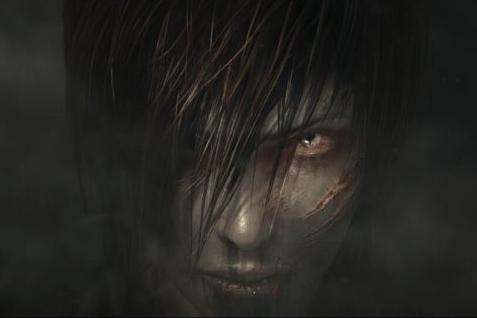 XP: 25
XP: 25
No. Appearing: 1d8 (3d6)
Armor: 14
Move: 120′
Hit Dice: 2 (9 hp)
Attack: Claw +2 (1d4 + paralysis) or weapon +2 (1d6)
Saving Throws:
Paralysis: 14
Poison: 12
Breath: 15
Device: 13
Magic: 16
Morale: 8
Special: Immune to disease, poison, charm, paralysis, and sleep.
Ghouls are elves, yao, or other humanoids who have been corrupted by the dark magic of sorcery or demons. Though they have never truly died, they resemble the undead, existing in a state between life and death. They grow gaunt with pale skin and dark sunken eyes and are suffering from madness, but are also filled with unnatural vigor and are much more cunning than any beast. Their clawed fingers can crush a mans throat and leave deep rends in the flesh of their victims, and their teeth have the strength to bite through bones, as they regain their strength by feeding on the flesh of humans and beasts.
Many ghouls once were adventurers and treasure hunters who delved too deep into ancient places where the living are not meant to tread, or what remains of those who become slaves of dark sorcerers or demons. The corruption that warped their bodies also affects their minds and all of them are clearly unhinged, but most of them seem to retain the memories of their former lives and traces of their past selves.
A living creature hit by a ghoul’s claws must make a saving throw against paralysis or collapse to the ground unable to move for 2d4x10 minutes.
Darklings
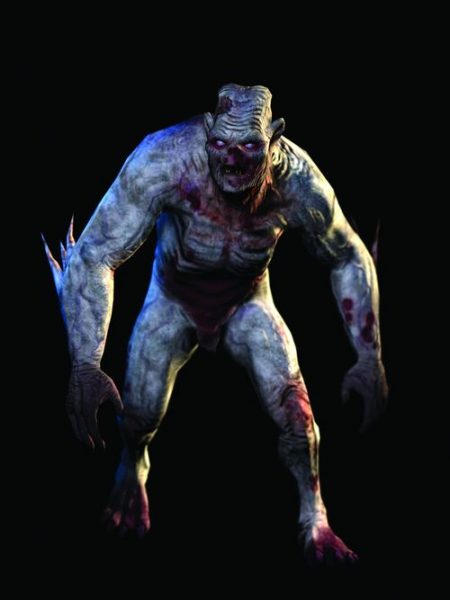 XP: 35
XP: 35
No. Appearing: 1d8 (2d8)
Armor: 14
Move: 120′
Climb: 90′
Hit Dice: 3 (13 hp)
Attack: Claw +3 (1d6 + paralysis)
Saving Throws:
Paralysis: 14
Poison: 12
Breath: 15
Device: 13
Magic: 16
Morale: 10
Special: Immune to disease, poison, charm, paralysis, and sleep.
Darklings are ghouls that not only have survived in their undead state for decades but actually managed to gain additional strength from it, losing their last traces of humanity in the process. While still roughly the size of a person, darklings are are powerfully build beasts with pale gray hide that run on all fours and have become truly feral in their madness. Darklings are almost always found underground and never go outside during the day. Their small black eyes can see perfectly even without any kind of light. They have never be seen to follow commands of other creatures or communicating in an intelligible manner but have been known to be magically goaded by sorcerers to patrol the area around their lairs or attack the strongholds of their enemies in large packs. Continue reading “Eldritch Lore: Undead”

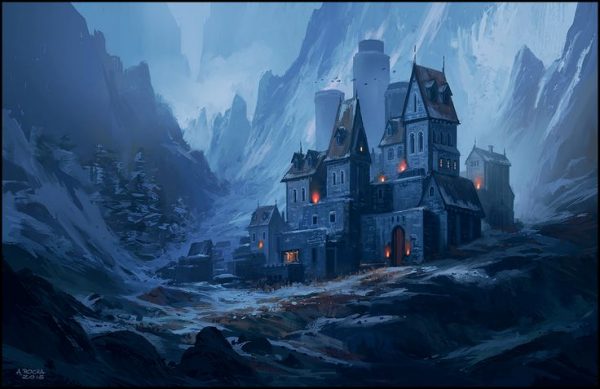 If it fits the campaign, you can then simply jump ahead to the next spring and continue from there. There are also a good number of great adventures that can be had during the winter. But these are usually not long expeditions into the wilderness. Much more commonly these are things with isolated villages being threatened and no help coming until spring. The kind of places where you would expect adventurers to stay for the winter. These don’t have to be elaborate adventurers. They can easily be just simple one-shots for a single session, but can also be pretty big things as well. The advantage of this is that you will have the players remember that they actually have experienced a winter and it’s not something that was only mentioned once in passing. For my Ancient Lands campaign, I am planning to make a simple Random Event table, on which I will make one roll for every month in winter camp. With a 1/6 chance four times in a row, something is almost certainly to happen; perhaps even two things. These would probably have to be rolled in advance and not at the table, so you can prepare some material for it. But again, it doesn’t have to be big things. “Frozen Zombies” or “Winter Wolves” would be enough as a hook for the GM. Then you can start with destroyed farms or dead cattle in a stable and have the players deal with it as you usually would in a sandbox. Since the players are kind of stuck in the place and have nowhere else to be, they probably wouldn’t resist looking into it.
If it fits the campaign, you can then simply jump ahead to the next spring and continue from there. There are also a good number of great adventures that can be had during the winter. But these are usually not long expeditions into the wilderness. Much more commonly these are things with isolated villages being threatened and no help coming until spring. The kind of places where you would expect adventurers to stay for the winter. These don’t have to be elaborate adventurers. They can easily be just simple one-shots for a single session, but can also be pretty big things as well. The advantage of this is that you will have the players remember that they actually have experienced a winter and it’s not something that was only mentioned once in passing. For my Ancient Lands campaign, I am planning to make a simple Random Event table, on which I will make one roll for every month in winter camp. With a 1/6 chance four times in a row, something is almost certainly to happen; perhaps even two things. These would probably have to be rolled in advance and not at the table, so you can prepare some material for it. But again, it doesn’t have to be big things. “Frozen Zombies” or “Winter Wolves” would be enough as a hook for the GM. Then you can start with destroyed farms or dead cattle in a stable and have the players deal with it as you usually would in a sandbox. Since the players are kind of stuck in the place and have nowhere else to be, they probably wouldn’t resist looking into it.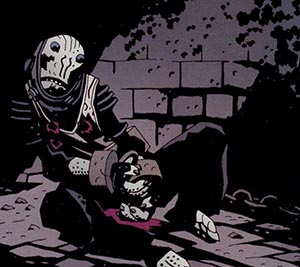
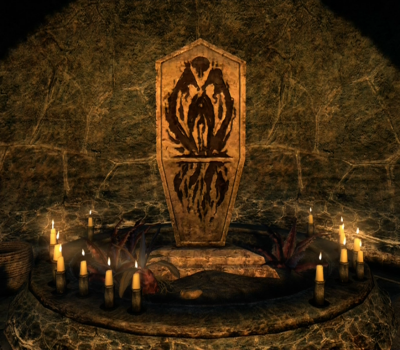 What am I going to do with unbdead that really makes them seem like an integrated part of the setting instead of something foreign clumsily tacked on? No afterlife has to remain integral to the religion and cosmology of the Ancient Lands. Removing the spirit of a mortal (and putting it somewhere else) also must remain an impossibility. But there is still the Spiritworld. The limitation that spirits have to be tied to the body applies only to mortals, such as people and animals. For spirits this is not the case and they can manifest physical shapes separate from their actual “bodies” (mountains, lakes, trees, …) and possess the bodies of mortals. In Final Fantasy X, there are the fayth, great mystics of ancient times who have somehow preserved their bodies in an eternal sleep within sacred shrines and gained the ability to create powerful spiritual phantoms that can aid living summoners in battle. I really quite like that concept. Putting great shamans into an eternal sleep between life and death to become something similar to spirits that can advise the living in times of need would be pretty cool.
What am I going to do with unbdead that really makes them seem like an integrated part of the setting instead of something foreign clumsily tacked on? No afterlife has to remain integral to the religion and cosmology of the Ancient Lands. Removing the spirit of a mortal (and putting it somewhere else) also must remain an impossibility. But there is still the Spiritworld. The limitation that spirits have to be tied to the body applies only to mortals, such as people and animals. For spirits this is not the case and they can manifest physical shapes separate from their actual “bodies” (mountains, lakes, trees, …) and possess the bodies of mortals. In Final Fantasy X, there are the fayth, great mystics of ancient times who have somehow preserved their bodies in an eternal sleep within sacred shrines and gained the ability to create powerful spiritual phantoms that can aid living summoners in battle. I really quite like that concept. Putting great shamans into an eternal sleep between life and death to become something similar to spirits that can advise the living in times of need would be pretty cool.